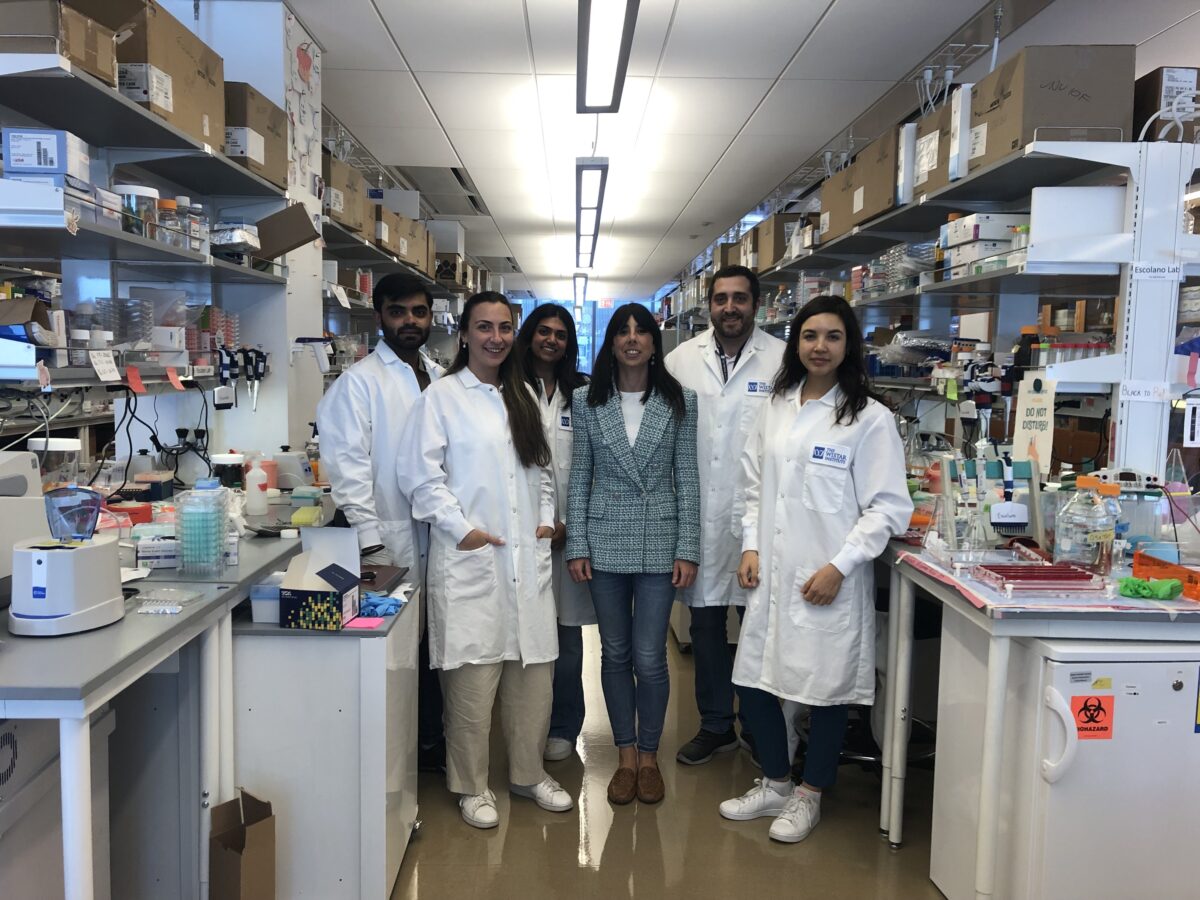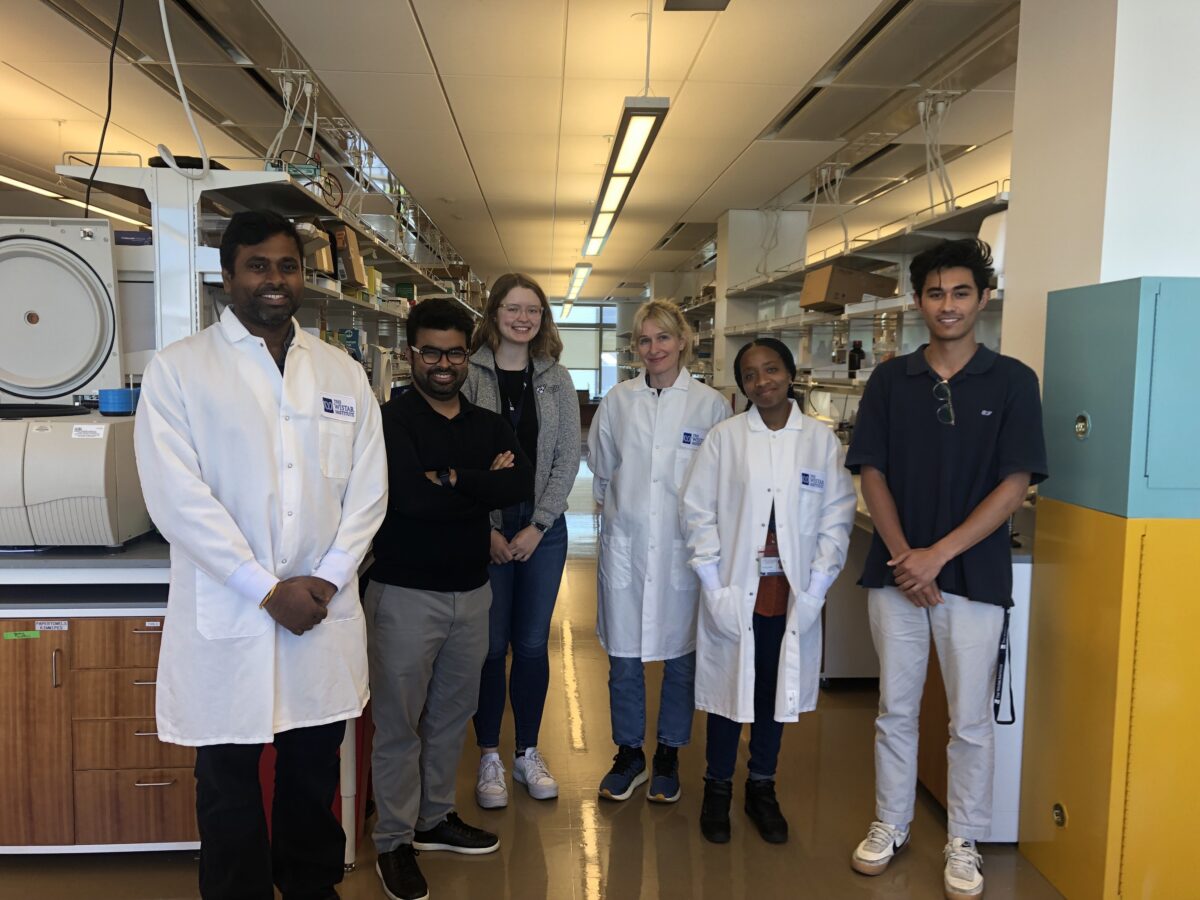Escolano is working on a technique for an effective HIV vaccine and Srivastava is researching computational biology in his hybrid lab. They’re both purposely doing that advanced medical research in Philadelphia.
The Wistar Institute, a private nonprofit biomedical research institution, is nestled right next to the University of Pennsylvania campus and hospital complex. The center is home to 40 labs working on various solutions, primarily around cancer and infectious diseases, with projects mostly funded by grants and contracts from federal agencies.
Researchers at Wistar come from around the world, but what they all have in common is creativity and curiosity for discovery science, said Dario Altieri, the institute’s president and CEO.
“We don’t tell them what to work on,” Altieri told Technical.ly. “They come here with their ideas, with aspirations or dreams. And the goal is for us to really provide the infrastructure and resources that are needed to pursue those dreams.”
Both Escolano and Srivastava are passionate about the human impact their research could have. They came to Wistar because of the welcoming and supportive environment the institution offers.
Finding a long-term solution for HIV
Escolano works in Wistar’s Vaccine and Immunotherapy Center. She’s been there almost three years, researching vaccine design and studying immunology and the body’s response to infections.
“We are very interested in understanding how vaccines need to be designed so they induce the type of response and protection that we expect them to,” Escolano said.
Originally from Spain, Escolano completed her PhD there before moving to New York to pursue post-doctoral research at the Rockefeller University. She knew she wanted to be an independent investigator and run her own lab, but she specifically came to Wistar because of the tight-knit research community.

There’s a lot of freedom at Wistar to pursue the work she’s passionate about, she said. Its location near institutions like Penn, Drexel University, Children’s Hospital of Philadelphia and others in the life sciences community was also a draw.
“I found it’s very supportive and welcoming,” Escolano said, “and I felt very welcome when I came to Philadelphia.”
Her recent work is focused on vaccinating against HIV. There are thousands of versions of HIV, and an effective vaccine should be able to protect against a majority of them, she said.
Standard vaccine protocol injects a component of a virus to trigger an immune response. That exact same component is repeated for booster shots. That doesn’t work well for HIV, Escolano explained, because more mature and more active antibodies are needed to achieve protection.
Her protocol, called sequential immunization, engineers part of the HIV virus so the body targets it specifically. The following doses of the vaccine are each slightly different from each other, meaning the virus component is less engineered and closer to the “wild” form of the virus.
“That process teaches the immune system to recognize the part that we want to target and make that response to evolve and mature and become refined,” Escolano said. “To be able to recognize and neutralize a lot of HIV viruses in circulation.”
The challenge of HIV is what drew Escolano. Despite there not yet being a vaccine, she said, HIV research has come a long way and it’s impacting how vaccines for other viruses are developed. Her sequential immunization protocol, for example, can be applied to other viruses that have multiple strains, such as the flu.
Eventually, Escolano would like to see her work go to a human clinical trial and have a tangible impact.
Combining biology and computer science
Srivastava has a combined wet lab and computer lab to support his research, which combines single cell technology with computational biology.
Originally from India, Srivastava moved to New York to complete his PhD in computer science and his postdoctoral fellowship, and his interest in interdisciplinary research goes back to that time. Biology and computer science are not necessarily connected, he said, but his work melds the two fields together.

Srivastava was drawn to Wistar because of the collaborative environment, with experts in many different fields all under one roof. He also appreciates the access to sequencing and bioinformatics resources, he said.
His team is currently researching how blood cell development changes when there is cancer present, and how to measure different gene profiles and compare them.
“What we have to do is basically figure out a way to quantitatively measure what has changed in … a disease condition compared to a healthy individual,” Srivastava said.
It’s no easy feat, since each person has trillions of blood cells that have billions of different DNA bases — and each person is different. This diversity increases even more when there are cancer cells present, Srivastava said.
The dataset is so big that traditional computers can’t handle all the information, so Srivastava is working on algorithms and software to analyze this data.
“Isolating these groups of cells, comparing basic sequencing, then comparing the different expressions and figuring out what is wrong is an overarching goal,” he said, noting that gathering this information is important so providers can intervene. The work aims to make it easier for clinicians to identify what’s wrong with patients and find appropriate treatment options.
“With computational biology,” Srivastava said. “[What] excites me is basically connecting to a patient who is suffering and is there a way so that we can help them.”







